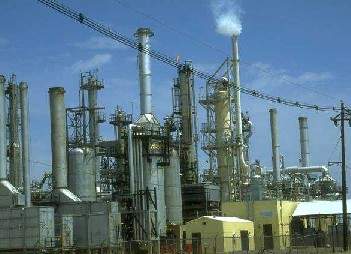The researchers and the Technion registered a patent and established a joint company with the Renewable Resources Company * The goal - to compare the mineral composition between desalinated water and water from the ground

The idea behind the process is to transfer to the drinking water magnesium ions originating from the seawater that feeds the desalination plant. All desalination facilities in Israel operate using the reverse osmosis method, in which the water passes through membranes that almost completely separate the salts from the water. Naturally, this water is not chemically stabilized nor does it contain calcium and magnesium, which are essential minerals for human and plant health. To overcome these shortcomings, the water undergoes supplementary treatment, in which calcium and other chemicals are added to it, which are used to chemically stabilize the water. The other essential mineral, magnesium, is not added to them because of the high cost involved.
In addition to the impact on human health, it turned out that the lack of magnesium in the desalinated water causes damage to agricultural crops. The method developed at the Technion allows chemical stabilization of the desalinated water and the addition of calcium and magnesium at a low cost. "The concentration of magnesium in seawater is five times higher than the concentration of calcium (in equivalent units)," explains Dr. Uri Lahav, the developer of the method. "Therefore, when an ion exchanger with a high attraction for divalent cations and a very low attraction for monovalent cations is brought into equilibrium with seawater (or with the concentrate created in the desalination plant), it is "charged" with magnesium ions. After charging the ion exchanger, it is "discharged" into the drinking water and thus provides magnesium to the water. Each cycle of ion exchange is divided into three stages: in the first stage (the charging stage) the ion exchanger is "charged" with magnesium ions. In the next step, it is washed in order to minimize the passage of solutes from the seawater to the desalinated water that comes into contact with it. A calcium concentration that meets the criteria and at the same time a magnesium concentration is desired."
Comparing this process with the process that includes only dissolving limestone, it was found that the improvement in the quality of the final water is considerable, while the cost of adding magnesium is estimated at only 0.5 to 0.7 cents per cubic meter. The Technion registered a patent for the innovative process and established the Renewable Minerals for Water Company (with the Renewable Resources Company). In the coming months, a semi-industrial plant located next to the small desalination plant in Ma'agan Michael will start operating, where the process will be tested in different operating scenarios and with a flow rate of 400 to 1000 cubic meters per day.
The innovative process will be presented for the first time at the upcoming conference of the Israeli Water Association.
